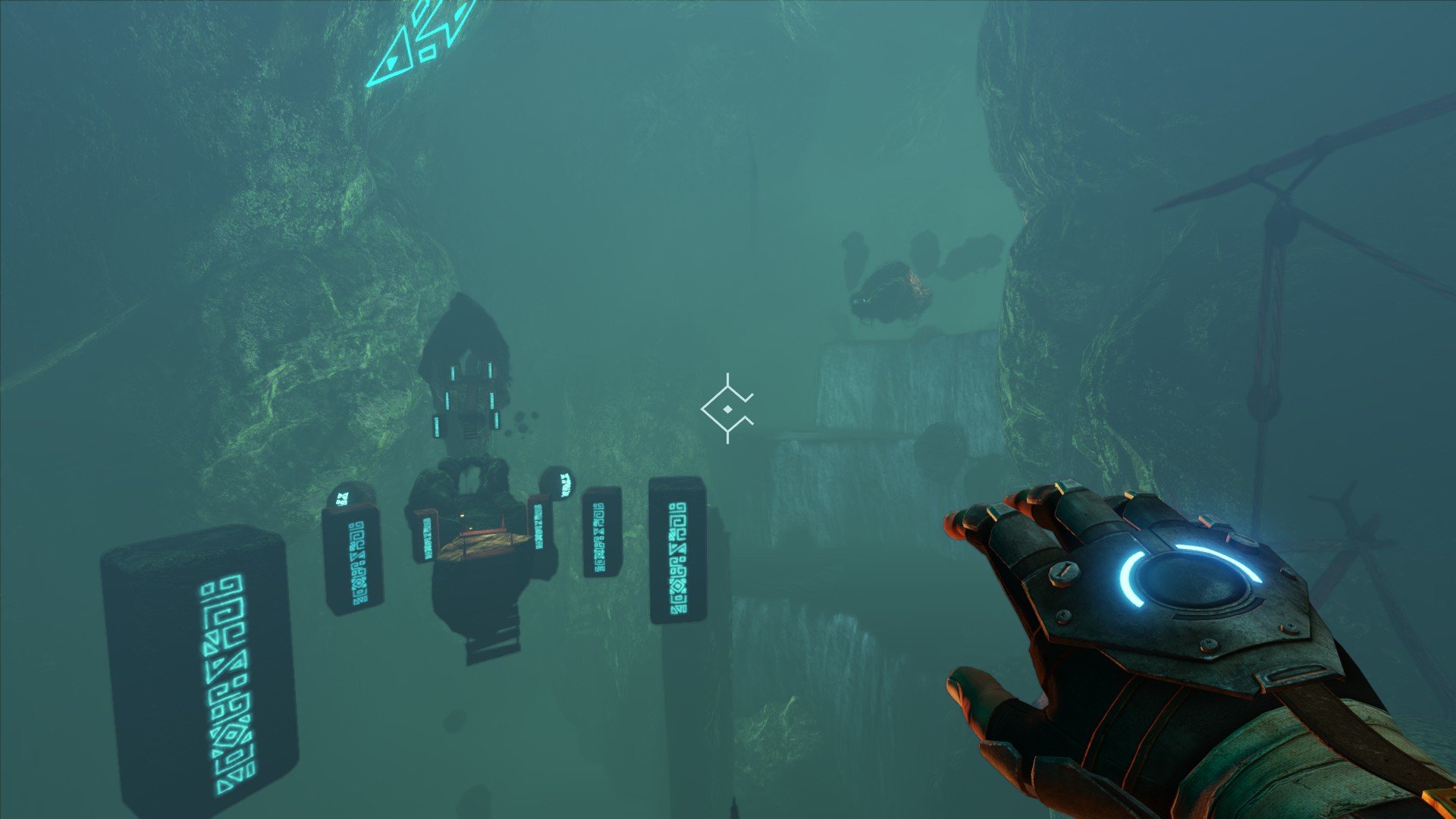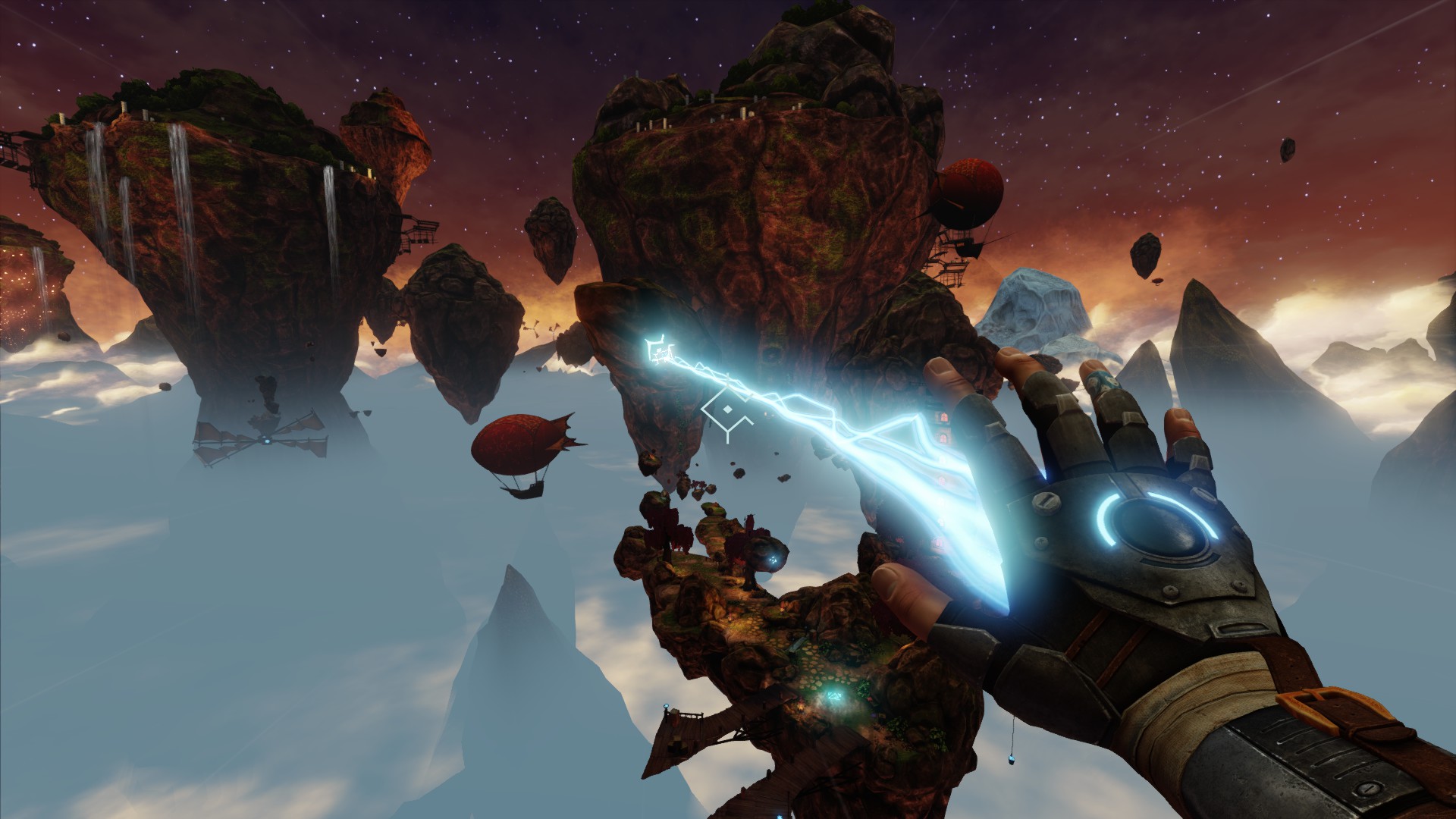Search
[{{{type}}}] {{{reason}}}
{{/data.error.root_cause}}{{{_source.title}}} {{#_source.showPrice}} {{{_source.displayPrice}}} {{/_source.showPrice}}
{{#_source.showLink}} {{/_source.showLink}} {{#_source.showDate}}{{{_source.displayDate}}}
{{/_source.showDate}}{{{_source.description}}}
{{#_source.additionalInfo}}{{#_source.additionalFields}} {{#title}} {{{label}}}: {{{title}}} {{/title}} {{/_source.additionalFields}}
{{/_source.additionalInfo}}A Story About My Uncle (PC)

A Story About My Uncle
Developed By: Gone North Games
Published By: Coffee Stain Publishing
Released: May 28, 2014
Available On: Windows
Genre: First-person platformer
ESRB Rating: N/A
Number of Players: 1
Price: $12.99
(Humble Store Link)
A Story About My Uncle starts like most walking simulators: you plod slowly forward, listening to a narrator set the stage of the plot – in this case, it’s a father telling his daughter a bedtime story about looking for his lost uncle Fred. You can stop to take a peek at the surroundings, interact with a map for more details, but ultimately you’re on slow rails the whole time. You pick up a suit, find a transporter pad, and interact with the switch.
Then, unlike most walking simulators, the video game starts.
A Story About My Uncle (ASAMU for short) is an atmospheric, exploration-heavy first-person platformer. The “adventure suit” you pick up in the misleading prologue contains your main movement means: while you can jump normally with space and sprint with shift, holding right-click will charge a jump – releasing it while walking or standing will shoot you skyward, and releasing while sprinting will catapult you forward. A few moments into the first level, you’ll pick up the first of three power crystals, activating the suit’s grapple beam; left-clicking will latch the beam onto almost any surface and draw you towards it. Depending on the number of crystals you’ve found, you can have one to three uses of the beam before you have to land and recharge. You’ll also eventually find a pair of rocket boots, giving you a double-jump of sorts, propelling you in whatever direction you’re looking at.

Strong Points: Responsive, fast platforming; introduces new mechanics each level; achievements add longevity
Weak Points: Story mode is short and easy; unskippable cutscenes; can clip through and get stuck in the landscape in areas
Moral Warnings: Some science-vs.-spirituality themes in the plot
While first-person platforming can be a huge disaster, ASAMU is as fluid as it gets. The controls are intuitive and responsive (and, in the case of keyboard and mouse, rebindable), the abilities are fast and intuitive, and you always feel in charge of your actions. It does take some getting used to – the grapple beam always pulls you toward your target, so you can’t just swing on a floating rock forever – but once you stop bashing your head on the scenery, you’ll be flying through the stages. You have a large amount of air control as well, turning the potentially-janky first-person platforming into a forgiving, if not slightly handholdy, affair. With the power crystals, boots, and later on grapple-recharging crystals being introduced in bursts, the whole game keeps things fresh through to the end. The only things slowing your momentum are the story bits, which revert the game into the walking simulator mode at the beginning; while you can walk by them, you still have to wait for them to finish before you can jump or grapple again.
The level design resembles that from the first Mirror’s Edge: large but linear, encouraging exploration while keeping things satisfyingly limited – while an open world suits some genres, this isn’t one of them. The grapple is versatile enough to get you basically anywhere you can see, including areas that the developers didn’t intend; go too far afield, and you risk sliding off flat surfaces, clipping into the geometry, or getting stuck between polygons. Luckily, plentiful checkpoints ensure that such failures are a mild annoyance at best. There are two types of collectibles to find: points of interest, and data printouts. The former provide extra story details by way of the daughter asking a question, and are either on the beaten path or easily spotted from it. The latter unlock goofy effects, such as changing the color of your beam or making your grapple into a goat’s tongue complete with sound effects (these are the Goat Simulator guys, after all). The printouts make a Morse code noise and emit a yellow glow, but it doesn’t always help when it’s out of both audio and visual range far below an area that doesn’t look special.
At first glance, ASAMU seems rather short, with the whole story being both very easy (your grapple path is clearly marked at every step) and rather short (a few hours at most). What adds to the longevity of the game, though, are the achievements. Each one of ASAMU’s achievements is exactly that – you won’t be getting any for power jumping for the first time or completing the prologue. While the time trial mode is obvious, and getting gold in each level requires rather extensive knowledge of the stage layout and your own movements, the achievements also point to perfect runs and grapple challenges. The first, of course, is to beat every level without falling. The second is to complete each stage in a limited number of grapples, which turns the game into more of a puzzler than a platformer. The grapple challenges, unfortunately, can only be done in story mode, not time trial, which means you’re stuck watching the cutscenes every time; you also can’t see either the grapple limit or your current count. It’s a nice feature as-is, but it could have used its own game mode along with the time trials.

Higher is better
(10/10 is perfect)
Game Score - 79%
Gameplay - 15/20
Graphics - 7/10
Sound - 8/10
Stability - 4.5/5
Controls - 5/5
Morality Score - 98%
Violence - 10/10
Language - 10/10
Sexual Content - 10/10
Occult/Supernatural - 9/10
Cultural/Moral/Ethical - 10/10
The game is a bit of a mixed bag graphically; it’s not the most impressive in terms of fidelity, but is still pleasantly crafted. The models of the frog people you interact with are low-poly inhabitants of the uncanny valley, but have some surprisingly good animations for the most part. The art style fits the world perfectly, and the environments look fantastic. Gone North Games took a page out of Valve’s book by having important areas subtly lit up, so you can usually always tell where to go, both to advance the tale and to find collectibles. The audio is, to be frank, barely noticeable, which in this case is a good thing. The music is atmospheric and subtle for the most part, but suits each area perfectly, at times even synching to the gameplay. The sound effects are believable and fitting as well. The same can’t be said about the voice acting, which is rather uniformly amateur, but it lends a kind of charm to a game about telling a bedtime story to a little girl.
Thankfully, the game is one a little girl could play as well, with next to nothing to worry about. There is a somewhat-frightening giant worm at the end of one stage, and a science-vs.-spirituality aspect to the plot, but that’s the extent of it. It is worth mentioning that the story is more engaging than it seems at first glance – the alien language you see is fully translatable and, combined with the epilogue, makes this story about the protagonist’s uncle something more heartfelt than a simple lullaby.
A Story About My Uncle, once the rough first impression is out of the way, is a solid game on its own right, with satisfying platforming and excellent control. It could definitely be improved, however; a sequel or two could propel it from a good game to an outstanding one. The $12.99 asking price may be a tad steep if you don’t fully commit to getting every achievement, but at this point, it’s commonly on sale and occasionally given away for free. Here’s hoping for more bedtime stories for Gone North Games.
-Cadogan








